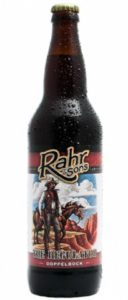Top 10 Doppelbock Lagers Brewed in USA
The best Doppelbocks have a malty sweetness that is dominant but should not be cloying. Malt character is more reminiscent of fresh and lightly toasted Munich-style malt; more so than caramel or toffee malt character. Some elements of caramel and toffee can be evident and contribute to complexity, but the predominant malt character is an expression of toasted barley malt. Doppelbocks are full bodied and deep amber to dark brown in color. ABV: 6.5% – 8.0%. IBU: 17-27

1. The Regulator – Rahr and Son – Texas
2. Wobblor – Crooked Lane Brewing – California
3. Emancipator – Spilled Grain Brewhouse – Minnesota
4. Spectator – On Tour Brewing – Illinois
5. Double Vision Doppelbock – Grand Teton Brewing – Idaho
6. Samuel Adams Double Bock – Samuel Adams – Massachusetts
7. Detonator Doppelbock – Fish Brewing Company – Washington
8. Ballast Point Brandy Barrel Aged Navigator Doppelbock – California
9. Dominator Doppelbock – Sun King Brewing – Indiana
10. Duck-Rabbator Doppelbock – Duck-Rabbit Craft Brewery – North Carolina